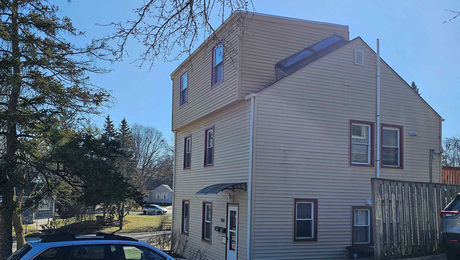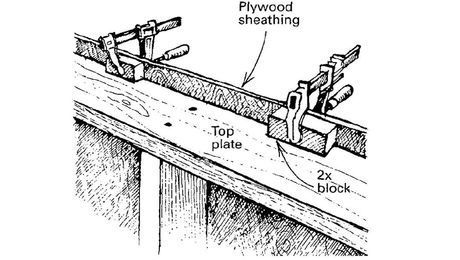Podcast 596: Broken Trusses, Frost-Protected Foundations, and Air Control Methods
Follow the Fine Homebuilding Podcast on your favorite app. Subscribe now and don’t miss an episode:
 |
Dack says new net-zero builds can be affordable. RJ shows us Matt Risingers’ garage wall. Enrique says don’t peel and stick your entire roof. Mike Guertin says a heat-pump water heater is a smart investment. Eric has to fix a pair of trusses. Mike the RVer wonders if you can leave a frost-protected slab foundation exposed in the winter. Is taped sheathing or detailed WRB a better air control layer?
Editor Updates:
- Mike’s Sierra Nevada mountains, Sequoia Forest trip
- Brian’s house: outside work, final CO work
 |
 |
 |
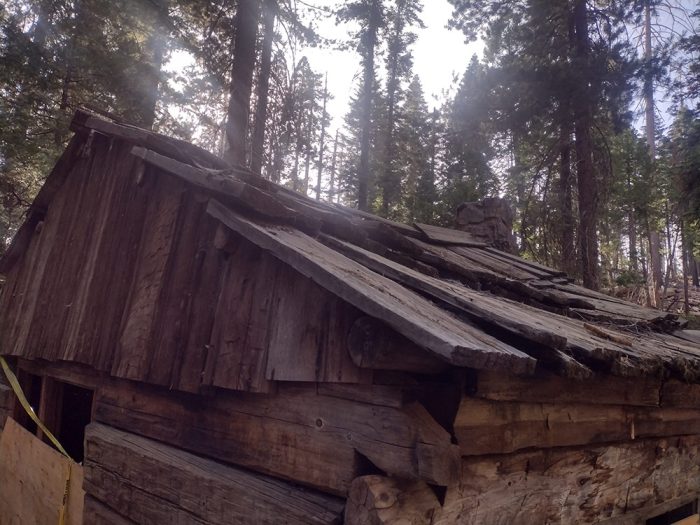 |
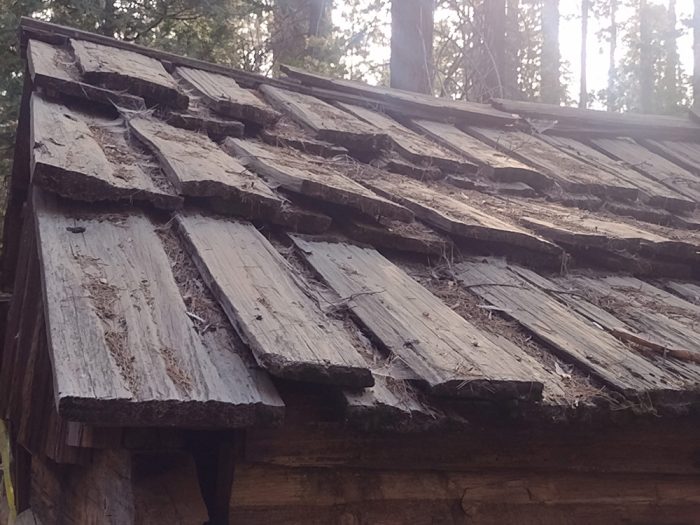 |
Listener Feedback 1:
Roberta writes regarding Kevin’s question about building a near net-zero 1000-sq.-ft. house for $250k:
I think the short answer to Kevin’s question is “Yes.” But with a few caveats.
- Ian was able to build his house for $124.34 (not $124.35) per square foot. So that’s only $124,340. But Kevin is going to have to do as much of his build as Ian did, which seems like almost everything.
- Ian’s build did not include PV (which is, as Mike pointed out, the route to net zero). This will run into the tens of thousands of dollars.
- As Patrick pointed out, a lot of it depends on on-site utilities. A well will set you back $20-$25K. Septic can run the same or even a lot more (ours is $40K).
- Unless the site is flat and cleared, he’s going to have trees to cut down and remove, dirt to move around, potential fill needs, and, of course, a driveway to build. This can add up fast.
$20K here and $20K there, and pretty soon you’re talking real money.
Related Links:
- Introducing FHB House 2021: Wisconsin
- Affordable Net-Zero Housing: Designed for the Budget
- GBA.com: Building a Low-Cost Zero-Energy Home
Listener Feedback 2:
RJ writes concerning the discussion of an insulated, air-sealed garage and attic:
Concerning the airtight garage discussion of August 4th, it seems the listener was following much of Matt Risinger’s Central Texas Passive House details. Risinger did condition his attached garage with a dedicated minisplit. Risinger’s attics are also conditioned spaces.
My understanding is that the garage houses his wife’s car and also serves as a minishop without dedicated outside venting. However, the space above the garage is primarily a bedroom. Risinger’s design had no unconditioned attic space above the garage.
Risinger built a separate outdoor shed for lawn equipment and fuel. He employed air barriers between the garage and the rest of the house but still had blower-door issues. The sealing work between the spaces required reworking and the addition of unplanned closed-cell spray foam, even though his build strategy was ZIP sheathing, tapes, Liquid Flash, exterior rigid foam, and interior mineral wool. Closed-cell spray foam came to the rescue between the garage and his occupied spaces.
If the listener sealed his garage attic space as described, he should consider conditioning it with the rest of the attic. Particularly if he plans to separately condition the garage.
As the listener mentioned, Risinger built a double-layer unvented roof, and used “monopoly house” framing and a very elaborate mechanical system in an all-electric house. That video is worth watching for HVAC nerds.
- Matt Risinger, Youtube: Mechanicals and House Walk Through
- Matt Risinger, Youtube: Super Insulated Garage
- Matt Risinger, Youtube: Framing and Roof Exterior Insulation
Related Links:
- Conditioning an Attached Garage
- Garage Separation for a High-Performance Build
- Air-Sealing the Ceiling Joists in an Attached Garage
Listener Feedback 3:
Enrique writes:
Attics are generally humid spaces. Whether you’re working with a traditionally vented roof or an unvented roof with a conditioned attic, humidity levels are going to be elevated in these spaces due to hygric buoyancy. Normally, water vapor diffuses through the roof sheathing and through the roof underlayment, most commonly a roofing felt or roofing paper. These traditional underlayments increase in permeability when they are saturated, allowing any moisture that may have made it through the underlayment to dry out. This system has worked quite well for decades.
However, when we install a vapor-impermeable membrane on a roof that is not designed for it, we have stopped the movement of water vapor, instantly increasing the humidity levels. When temperatures get a little colder outside, this humid air finds a cold surface to condense on. In most cases, this occurs at the backside of the roof sheathing, and you end up with a sweating roof. To make things worse, if you have a tear in this underlayment, storm water will get trapped underneath this membrane and will have a hard time drying out, especially if this is an unvented, conditioned roof.
Related Links:
- Stop Installing Ice & Water Shield on Your Entire Roof
- Synthetic Roofing Underlayments
- Sheathing the Roof and Completing the Air Barrier
- GBA.com: Air Barrier for a Vented Roof
Listener Feedback 4:
Mike Guertin writes:
I’ve had heat-pump water heaters for eight years in my own home and a couple rental houses, and I have discovered a few benefits aside from lower electric bills. It’s unfortunate that many water-heater replacements are made when there’s a failure of the current heater and homeowners don’t have time to explore the options. They just want hot water to flow, and service people usually don’t offer a heat-pump water heater option.
Each of the heat-pump water heaters that I have paid for itself within two years in reduced electricity cost, even without incentives from the utility company and tax credits. I estimate that it had cost us $80 each month to operate a regular resistance-only water heater. The heat-pump water heater costs about $35 per month. So, we save about $500 each year on electric bills at each residence.
You can get a decent heat-pump water heater for $1600 to $2000. That sounds like a lot when you compare it to a $500 resistance-only water heater, but it pays for itself in just a few years in our area, where electric rates are high.
After installing the heat-pump water heater in my partially finished basement I ditched the dehumidifier that ran for 4-1/2 months a year. The heat-pump water heater condenses moisture in the air and keeps the basement dry much like the dehumidifier. So, one way to look at it is I get free dehumidification while running the heat-pump water heater; the other way to look at it is that I get free hot water while running the “dehumidifier.”
For an extra $250 I bought the duct adapter kit so I can control the source and discharge of the airflow through the heat pump. I ran short intake and exhaust ducts to the outside and a series of short duct runs inside, so with the turn of a couple dampers I can select where I draw intake air from and discharge the cool dry are to. I circulate outdoor air when I don’t need dehumidification nor want cool air discharged inside the basement or the house (usually in April, May, October, and early November). During summer, I switch dampers to draw in basement air and discharge the cool dry air either into the basement or the main bedroom, where it reduces the cooling load.
Related Links:
- GBA.com: The Benefits of a Heat-Pump Water Heater
- Heat Pumps and Cold-Climate Applications: Designing for Comfort and Resiliency
- Heat-Pump Water Heaters
- Choosing an Efficient Water Heater
Question 1: Should I fix a broken truss on site?
Eric writes about a Members-only Aftershow: Hey FHB podcast,
My recent experience with trusses delivered to the job site had me wondering what you (or more specifically a managed job site) would do. I had trusses delivered to my building site. I began installing them, and when I got to the bottom of the stack, I discovered two were broken. These were 24-ft. span with a 2-ft. overhang. One was cracked at the upper chord/bottom chord joining plate, essentially making the tail unsecured. The other was missing a joining plate at this location and had a horizontal crack in the chord. I reached out to my supplier, who then reached out to the manufacturer to seek remedy. From what I can find online, it seems that many manufacturers will send an engineered drawing detailing how to repair the truss. Have you ever encountered this situation, and how did you remedy it? Waiting weeks for two trusses will put me behind schedule for sure. How is it done in the real world of a job site?
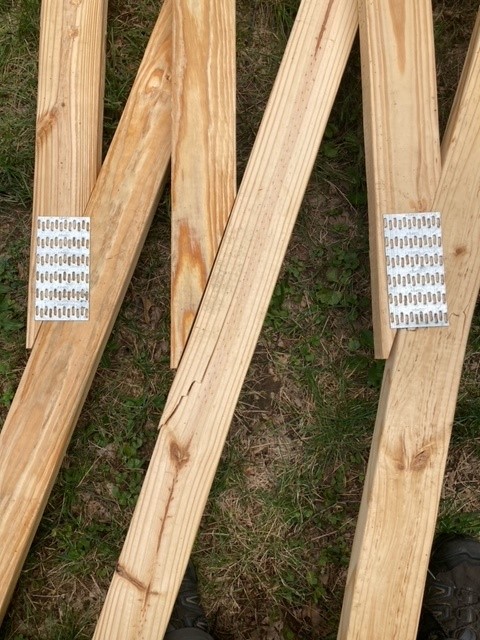 |
 |
 |
Thanks!
Eric
Related Links:
Question 2: How do I protect a slab-on-grade foundation over the winter?
Mike writes:
The Habitat for Humanity folks in the Iron Range of Minnesota are building a few homes on frost-protected slab-on-grade foundations. Patrick, you know it can get cold up here.
One of the slabs may not get built on before winter sets in. All the plumbing and radiant-heat tubing will be in or below the slab. I thought I remembered y’all saying that this foundation design needs to have a warm top on it over winter. What say the experts?
Mike
Habitat Care-A-Vanner
Related Links:
- Slab Foundation for Cold Climates
- Tying in a Frost-Protected Shallow Foundation
- Protecting Foundations from Frost
Question 3: What are the pros and cons of WRB vs. taping?
fine PNW on GBA writes:
I know I’m a bit late here, but I’m considering a taped WRB as an air barrier, and I’m curious what sort of pitfalls should be looked out for, or why I should maybe opt for taping sheathing instead? Most of my walls are plywood sheathing, but some are old shiplap with lots of seams that would need taping.
Related Links:
- GBA.com: Tape Sheating Seams or Detail WRB as Air Barrier
- Nine Water-Resistive Barriers Worth Knowing About
- Combining Sheathing With a WRB and Air Barrier
END NOTE:
Podcast 596: Members-only Aftershow — The State of Home Building
The crew reflects on what we’re getting right and wrong with new housing in America.
This episode of The Fine Homebuilding Podcast is brought to you by Loctite’s Pro Foam

The Gaps & Cracks and Window & Door items seal and insulate gaps and fit any standard foam gun applicator. Loctite’s Fire Block Pro Foam fills gaps while resisting the migration of fire and smoke. Perfect for electrical, plumbing, and wherever a fire-resistant foam is needed. Say yes to Loctite’s new Pro Foams. Say yes to Loctite.
Visit Loctiteproducts.com for more information.
Check out one of our latest Project Guides: Energy Retrofit!
Check out our FHB Houses:
Visit the Taunton Store • Magazine Index • Online Archive • Our First Issues • All Access

If you have any questions you would like us to dig into for a future show, shoot an email our way: fhbpodcast@taunton.com.
If we use your question we’ll send you a FHB Podcast sticker!
FHB Podcast T-shirts!
Represent your favorite podcast! Available in several styles and colors. Made from 100% cotton. Find the Podcast t-shirt and more cool products in the Fine Homebuilding Store.
| Fine Homebuilding podcast listeners can now get 20% off anything in the Taunton store, including Pretty Good House.
Use the discount code FHBPODCAST to take advantage of this special offer. |
 |
“Finally, knowledgeable people talking about building reasonably-sized, high-performance houses for normal people with real budgets!” — DanD, VA, 8/19/22, Amazon.com review |
We hope you will take advantage of a great offer for our podcast listeners: A special 20% off the discounted rate to subscribe to the Fine Homebuilding print magazine. That link goes to finehomebuilding.com/podoffer.
The show is driven by our listeners, so please subscribe and rate us on iTunes or Google Play, and if you have any questions you would like us to dig into for a future show, shoot an email our way: fhbpodcast@taunton.com. Also, be sure to follow Fine Homebuilding on Instagram, and “like” us on Facebook. Note that you can watch the show above, or on YouTube at the Fine Homebuilding YouTube Channel.
The Fine Homebuilding Podcast embodies Fine Homebuilding magazine’s commitment to the preservation of craftsmanship and the advancement of home performance in residential construction. The show is an informal but vigorous conversation about the techniques and principles that allow listeners to master their design and building challenges.
Other related links
-
- All FHB podcast show notes: FineHomebuilding.com/podcast.
- #KeepCraftAlive T-shirts and hats support scholarships for building trades students. So order some gear at KeepCraftAlive.org.
- The direct link to the online store is here.








